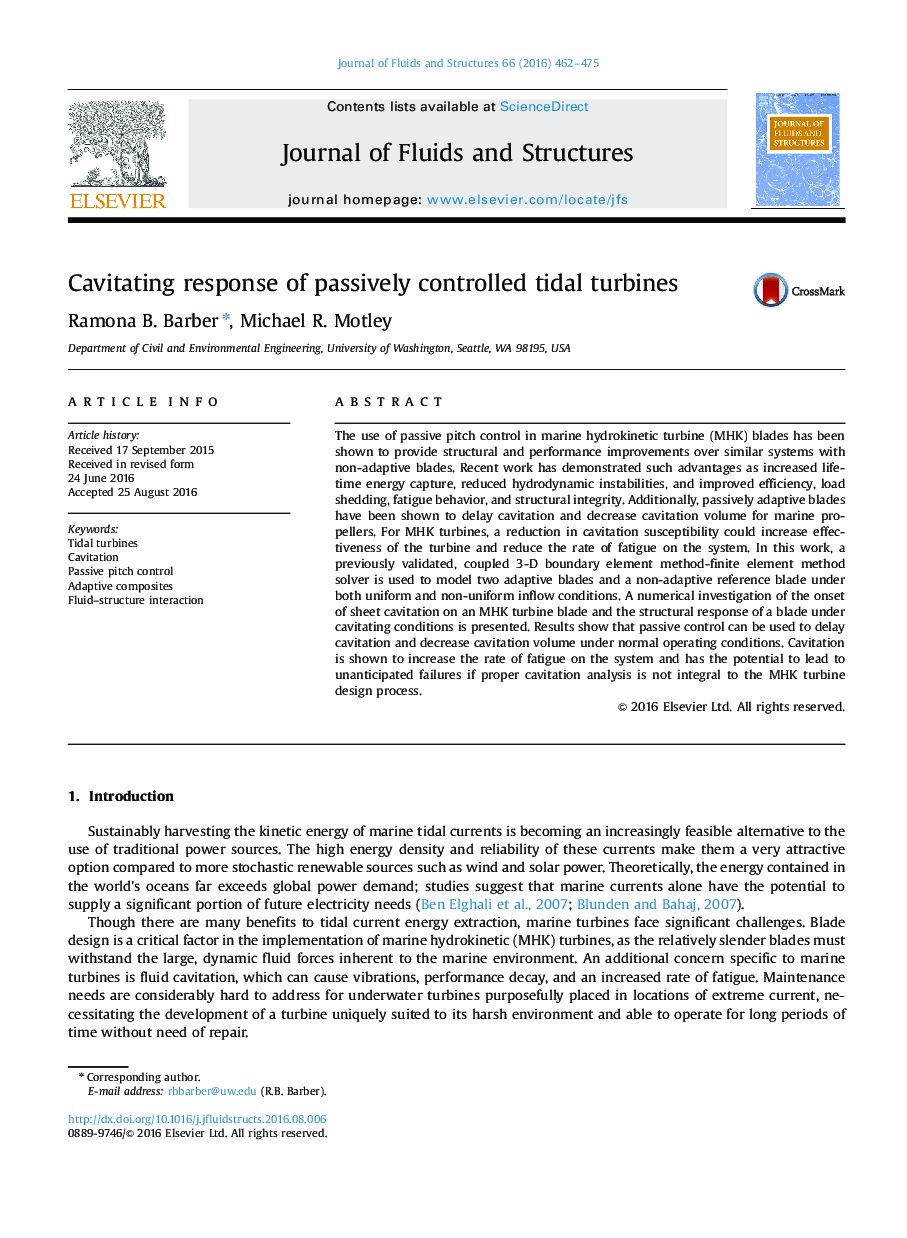| کد مقاله | کد نشریه | سال انتشار | مقاله انگلیسی | نسخه تمام متن |
|---|---|---|---|---|
| 7175885 | 1466581 | 2016 | 14 صفحه PDF | دانلود رایگان |
عنوان انگلیسی مقاله ISI
Cavitating response of passively controlled tidal turbines
دانلود مقاله + سفارش ترجمه
دانلود مقاله ISI انگلیسی
رایگان برای ایرانیان
کلمات کلیدی
موضوعات مرتبط
مهندسی و علوم پایه
سایر رشته های مهندسی
مهندسی مکانیک
پیش نمایش صفحه اول مقاله

چکیده انگلیسی
The use of passive pitch control in marine hydrokinetic turbine (MHK) blades has been shown to provide structural and performance improvements over similar systems with non-adaptive blades. Recent work has demonstrated such advantages as increased lifetime energy capture, reduced hydrodynamic instabilities, and improved efficiency, load shedding, fatigue behavior, and structural integrity. Additionally, passively adaptive blades have been shown to delay cavitation and decrease cavitation volume for marine propellers. For MHK turbines, a reduction in cavitation susceptibility could increase effectiveness of the turbine and reduce the rate of fatigue on the system. In this work, a previously validated, coupled 3-D boundary element method-finite element method solver is used to model two adaptive blades and a non-adaptive reference blade under both uniform and non-uniform inflow conditions. A numerical investigation of the onset of sheet cavitation on an MHK turbine blade and the structural response of a blade under cavitating conditions is presented. Results show that passive control can be used to delay cavitation and decrease cavitation volume under normal operating conditions. Cavitation is shown to increase the rate of fatigue on the system and has the potential to lead to unanticipated failures if proper cavitation analysis is not integral to the MHK turbine design process.
ناشر
Database: Elsevier - ScienceDirect (ساینس دایرکت)
Journal: Journal of Fluids and Structures - Volume 66, October 2016, Pages 462-475
Journal: Journal of Fluids and Structures - Volume 66, October 2016, Pages 462-475
نویسندگان
Ramona B. Barber, Michael R. Motley,